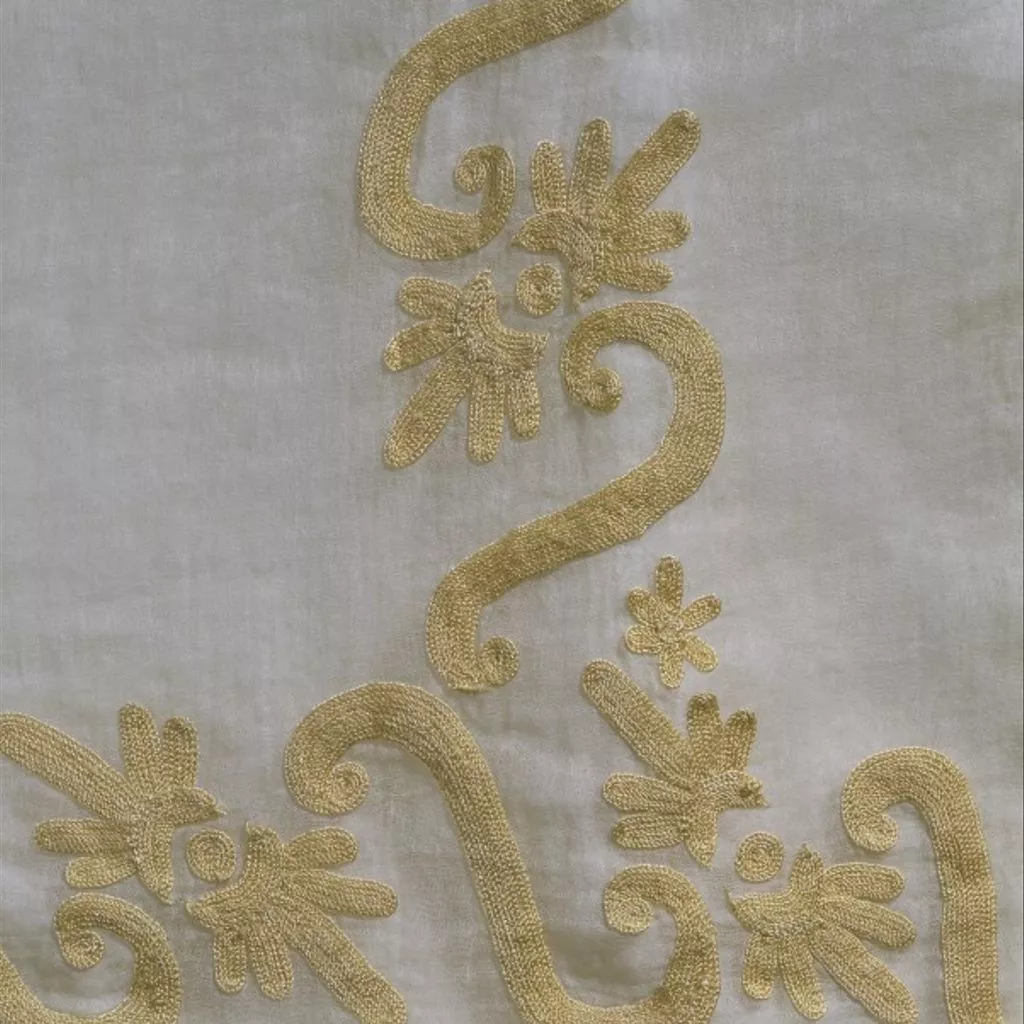Description
This elegant gown, with its high waistline and flowing train, is a fine example of the Neo-classical style of dress that was fashionable in Britain and France at the turn of the 18th and 19th centuries. Diaphanous Indian muslin fabric from Bengal was the perfect material for the new, lighter and less tailored styles, which were often complemented by the equally fashionable Kashmir shawls. The chain-stitch embroidery was also done in India, using the naturally golden-coloured tussore (wild) silk of Bengal. The designs on this dress recall the Neo-classical motifs that were popular in many media in Europe at that time, and are another indication that the fabric was intended for use in the West rather than in India.
Woman's white cotton muslin dress embroidered with tussar silk thread in chain stitch. Full length dress with a trained skirt at the back. The bodice is high and the seam comes to just below the bust in the Empire style. The neckline is low and square cut. The skirt has a straight front panel with a narrow panel on each side and widens towards the hem. The back panel is straight, but gathered into the bodice with tiny gathers on either side of the back opening. The dress opens down the back from the top of the neck to hip level, and it fastens by a thin cord running through the neck and at the centre back waist. There is an opening for a pocket in the right side seam. The shoulders are very narrow, and the sleeves are long to the wrist and are close fitting. The dress is decorated at the neck, hem, cuffs and down the centre with a scrolling pattern embroidered in chain stitch with gold silk thread.
A narrow belt is worn immediately under the bust and is embroidered with gold thread.
Woman's cotton muslin dress and belt embroidered with tussar silk thread, embroidered in Bengal, made in England, ca. 1795




